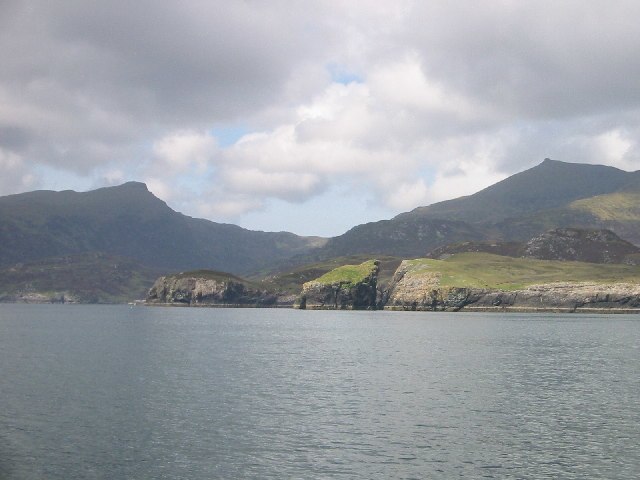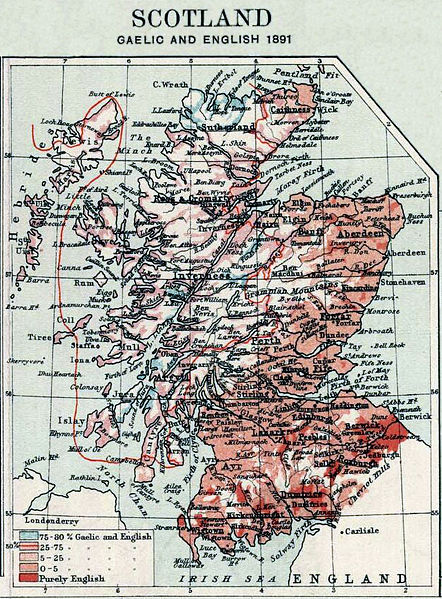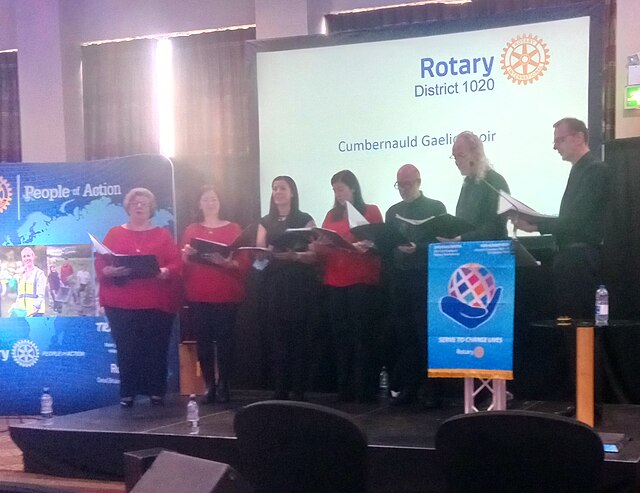South Uist is the second-largest island of the Outer Hebrides in Scotland. At the 2011 census, it had a usually resident population of 1,754: a decrease of 64 since 2001. The island, in common with the rest of the Hebrides, is one of the last remaining strongholds of the Gaelic language in Scotland. South Uist's inhabitants are known in Gaelic as Deasaich (Southerners). The population is about 90% Roman Catholic.
South Uist
Looking west to Nicolson's Leap. In the background are Gèideabhal, also known as Beinn Mhòr, on the left, and Hecla on the right.
The neolithic monument at Beinn A' Charra
Cladh Hallan roundhouses
Scottish Gaelic, also known as Scots Gaelic or simply Gaelic, is a Goidelic language native to the Gaels of Scotland. As a Goidelic language, Scottish Gaelic, as well as both Irish and Manx, developed out of Old Irish. It became a distinct spoken language sometime in the 13th century in the Middle Irish period, although a common literary language was shared by the Gaels of both Ireland and Scotland until well into the 17th century. Most of modern Scotland was once Gaelic-speaking, as evidenced especially by Gaelic-language place names.
1891 distribution of English (including Scots) and Gaelic in Scotland 75–80% Gaelic, and English ━ 25–75% Gaelic, and English; line indicates the 50% isogloss 5–25% Gaelic, and English 0–5% Gaelic, and English Purely English
Cumbernauld Gaelic Choir in 2021
Anne Lorne Gillies speaking publicly in the Scottish Gaelic language
Police Scotland vehicle logo (Bilingual)








